10 Swimming Safety Tips for Your Dog
Swimming is a great way to exercise your dog. It’s fun, it’s low impact and it’s a nice way to stay cool on those really hot days. But like everything else that’s fun in this world there are a few dangers to watch out for. If you’re going to take your dog swimming there’s a few things to keep in mind. Here’s 10 swimming safety tips for your dog.
1. Don’t Assume All Dogs Can Swim
Don’t assume that all dogs can swim. Some dogs take to the water like naturals, but others don’t have the physical capacity to swim effectively (they sink like a rock).
Much of your dog’s ability to swim depends on his body shape. Big chested breeds with short legs, such as the Bulldog, are known to have a hard time staying afloat. And those with flat faces, such as the Pug, are prone to breathing problems that leave them easily fatigued. And very small dogs, such as Chihuahuas, can get overwhelmed by big waves or strong currents.
So keep those factors in mind when teaching your dog how to swim. Not all dogs were made for swimming, and some may need the help of a life jacket to stay afloat.
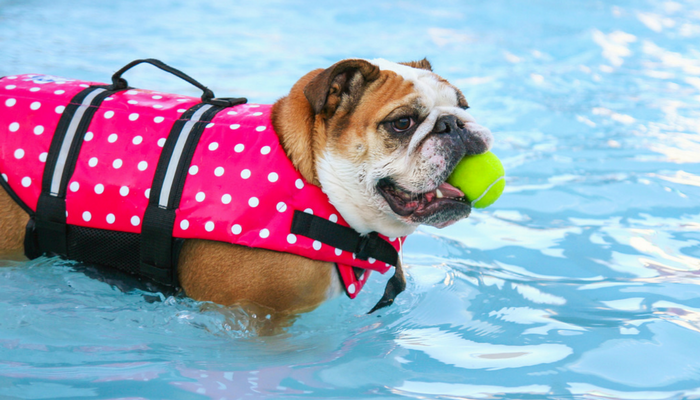
The Bulldog’s short legs and big chest makes it physically difficult for them to stay afloat in the water. If your dog struggles with swimming keep them safe by getting them a life vest.
2. Take it Slow When Teaching Your Dog to Swim
Many dogs are nervous when introduced to the water for the first time, so take it slow to avoid overwhelming them. Not all dogs are going to jump right in, many will need some convincing that it’s not such a scary thing after all.
Encourage your dog to follow you into shallow water. Praise him as he follows you in, and keep encouraging him to follow you around. Once your dog seems comfortable in shallow water you can try coaxing him out a little further with one of his favorite toys. Keep up the praise as he follows you around to show him that there’s nothing to be afraid of.
Don’t force them if they’re not ready, let them explore the water at their own pace. Some dogs will take to it right away, while others will require a few wading sessions before they’re confident enough to venture out and try swimming on their own.
3. Get Your Dog a Life Vest
Dogs that are learning how to swim should wear a life jacket for safety. And for dogs that have a hard time staying afloat, or for those that are nervous in the water a life jacket is recommended at all times to help keep them safe.
Even with practice many big chested breeds with short legs (see the Bulldog example above) will struggle with swimming. They have a tendency to sink in deep water, so wearing a life jacket helps give them the ability to stay above water.
Dogs that are nervous in the water have a higher risk of becoming fatigued. When dogs panic their respiration and ability to swim become compromised, which increases the likelihood of drowning. Wearing a life jacket can help keep them safe.
Dogs, even experienced swimmers, can get overwhelmed by strong currents or waves. If you’re going to take your dog to the beach when the waters are rough get them a life jacket for their own safety.
Finding the right size life vest for your can be a bit of a challenge, especially if you have a dog with atypical measurements. I recommend taking your dog to the local pet store and trying some on to make sure you get the right fit.
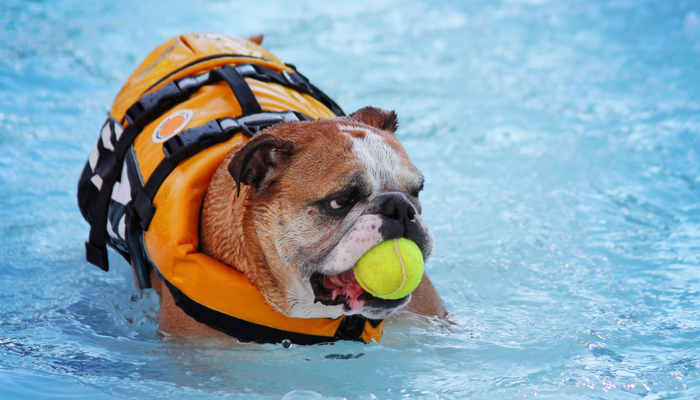
Life vests provide your dog with some extra support when swimming. Dogs that are learning to swim, or those that have a hard time swimming should wear one for their own safety.
4. Don’t Let Your Dog Drink from Lakes or Ponds
Whenever you take your dog swimming be sure to bring plenty of fresh water to keep them hydrated. Lakes, ponds, swamps and rivers are contaminated with organisms that can be harmful to your dog. In mild cases these organisms can lead to diarrhea, but in severe cases (such as Leptospira) they can be fatal.
In addition to bacteria many lakes and rivers are treated with pesticides that can poison your dog. Older dogs, puppies and those with compromised immune systems are more susceptible, but any dog should be discouraged from drinking from outdoor water sources.
5. Don’t Let Your Dog Drink From the Ocean
Drinking from the ocean can make your dog extremely sick. Salt water has an osmotic effect, pulling liquid into your dog’s intestines. This can cause diarrhea and vomiting, both of which can lead to dehydration (often called ‘beach diarrhea‘).
Unlike normal diarrhea, beach diarrhea is severe and comes on fast, and it causes dogs to dehydrate quickly. If dogs ingest enough salt water they can suffer serious kidney damage which can be fatal.
To reduce the risk of your dog getting sick be sure to bring along plenty of fresh water when you take your dog swimming. Keep a close eye on your dog and call them over if you see them start to drink from the ocean.
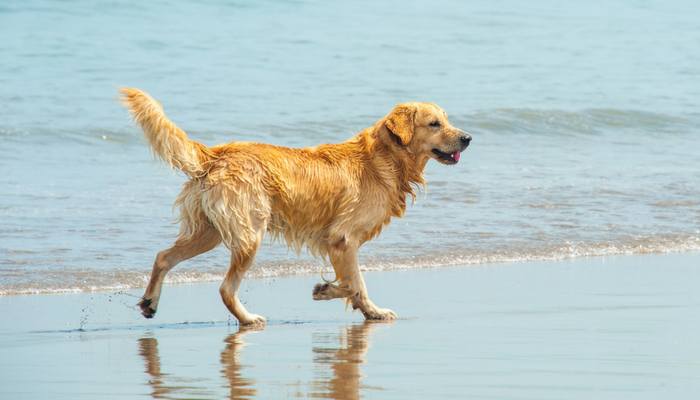
Salt water can cause diarrhea, vomiting and severe dehydration in dogs. Remember to bring along plenty of fresh water for your dog when heading out to the beach.
6. Watch Out for Advisories & Beach Closures
Many public beaches are monitored for bacteria, and when those levels get too high health departments close beaches. Most beach closures are due to E. coli, which is used as an indicator that there’s likely other harmful pathogens present in the water.
If you’re going to the beach with your dog be sure to check for postings at the entrance regarding any current advisories. You can also check online before you head out.
In Michigan we have the Beach Guard map that tracks advisories and closures throughout the state. To find out if any beaches near you are affected you can google “your state + beach closures” or use the EPA’s beach advisory map.
7. Ask Your Vet About Preventatives
Preventatives are treatments used to prevent your dog from coming down with certain diseases and illnesses. If you spend a lot of time outdoors with your dog talk to your vet about the options that make sense for your dog. Some of these will vary by region (ticks are more prevalent in northeast states, therefore a Lyme vaccine may be recommended), and some will vary depending on your dog’s activities.
For active dogs that spend a lot of time outdoors the Leptospira vaccine is often recommended. Leptospirosis is a disease caused by the bacterium Leptospira interrogans. The bacteria survives for long periods of time in water, and it’s often found in swamps, lakes and ponds. It can lead to kidney failure and death if left untreated.
I don’t want to scare you off of having fun with your dog outdoors, I just want to stress the importance of understanding the potential risks. Talk to your vet to find out what your dog is at risk for, and come up with a preventative plan that makes sense for your dog.
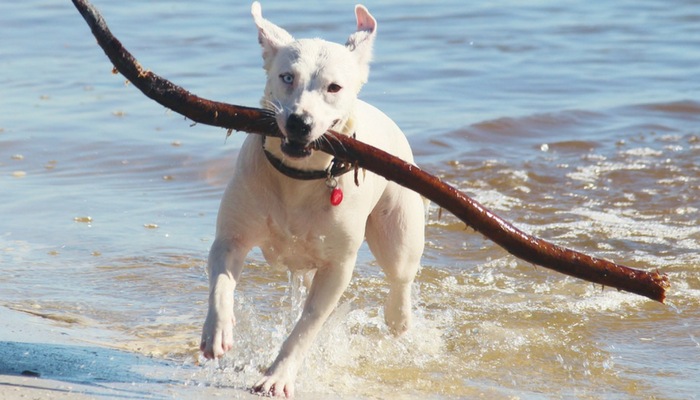
If your dog spends a lot of time outdoors talk to your vet about preventatives. Find out what your dog is at risk for and come up with a plan that’s right for your dog.
8. Watch Your Dog for Signs of Illness
There’s a few parasites that can transmit waterborne diseases to our dogs, and they’re impossible to spot with the naked eye.
My dog Carter got giardia after swimming, and it’s an experience I’ll never forget. I’d never seen diarrhea come on so quickly, nor that severely. Luckily that’s one of the ‘easier’ illnesses to treat, and after a trip to the vet he was back to normal within a day.
After taking your dog swimming watch for symptoms of illness including diarrhea, vomiting, lethargy, decrease in appetite and fever. If your dog shows any signs of illness take your dog to the vet for the correct diagnosis and treatment. Some waterborne illnesses are fatal if left untreated.
9. Watch Out For Blue-Green Algae
Blue-Green algae, also called cyanobacteria, is a bacteria most commonly found in calm waters such freshwater ponds and lakes. The toxins it creates are dangerous to humans, livestock and pets.
For dogs, exposure or ingestion of water contaminated by blue-green algae is often fatal. A lot of it ends up washing up onto the shore, creating even higher levels of concentration. So if you see any suspicious looking algae keep your dog away from the water itself and the shoreline.
Unfortunately the bacteria isn’t easy to spot unless it has clumped together. It can appear as green or brown flakes, and when fully bloomed it often appears as a blue-green film sitting on top of the water. For identification purposes here’s a photo gallery of more blue-green algae examples.
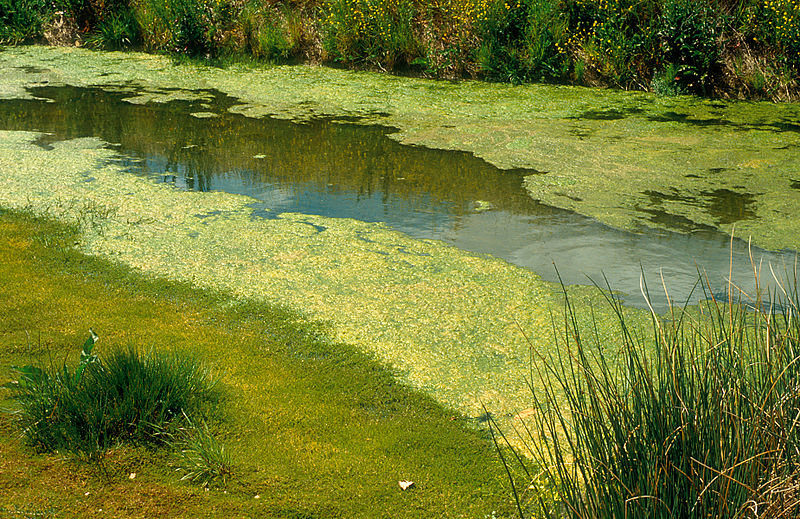
Blue-green algae via CSIRO
10. Wash Your Dog After Swimming
Wash (or at least rinse) your dog after a swim to help get rid of any bacteria that’s collected on their fur. If your dog isn’t cleaned off after swimming they’re going to be ingesting any nasty stuff they may have picked up when they groom themselves.
Bathing will also help get rid of any chemicals that may have build up on his fur, and it will help alleviate any itchiness caused by sand or debris.
Chronic ear infections can be an issue for dogs that swim regularly. Pay close attention to your dogs ears, making sure they’re clean and thoroughly dried after a swim. If you notice any changes in your dogs ears, or if they develop a foul odor, schedule a vet visit for diagnoses & treatment.
Have Fun & Be Safe This Summer
Go out and have some fun adventures with your dog this summer. Take them to the beach or your local dog-friendly pool. Swimming is great exercise for dogs, and it’s the perfect way to keep cool on those hot summer days. Just keep these tips in mind to help keep them safe.
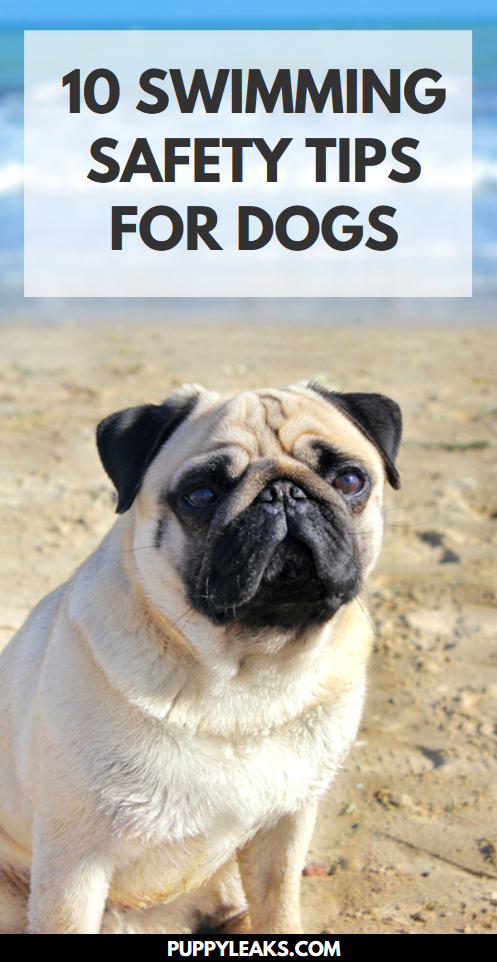
Please share with your friends
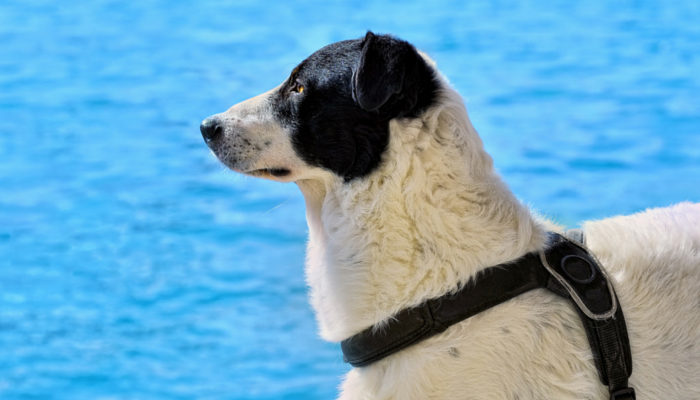

a life jacket/vest is also essential if you are anywhere other than a beach – trying to life a wet scared dog from underneath you into a boat or onto a pontoon is NOT easy. A life vest will have a strap to enable you to help them out of the water.
Thanks, I can’t imagine that’s easy to do at all without a life jacket.
Good tips. Sampson was used to the local, shallow rivers/streams/ponds, he knew about wading into the water. When he was just over a year old we rented a house with a pool, and his first experience with that was walking off the edge and into deep water. It took a good week of coaxing and showing him where the steps were, until he felt comfortable getting in it again. By the end of our vacation, he’d adapted himself to sunning, then cooling off in the pool.
Thank you, and I’m glad you were able to coax him back into the pool. I know I’d be freaked out if that happened to me, so I find it especially disappointing that the ‘toss em in and let them go’ attitude is even a thing. Not a fan of ‘tough love’ techniques.
I’m glad that you mentioned that you shouldn’t assume that all dogs can swim. It is true that some dogs can learn really easily and some dogs can’t. I really like your tip about taking it slow when you teach your dog how to swim as well. They are just like kids in that way. Taking your time would be better than trying to force them.
A doggy PFD is so damn important when it comes to your dog swimming, especially if its in moving water. Great article bravo!